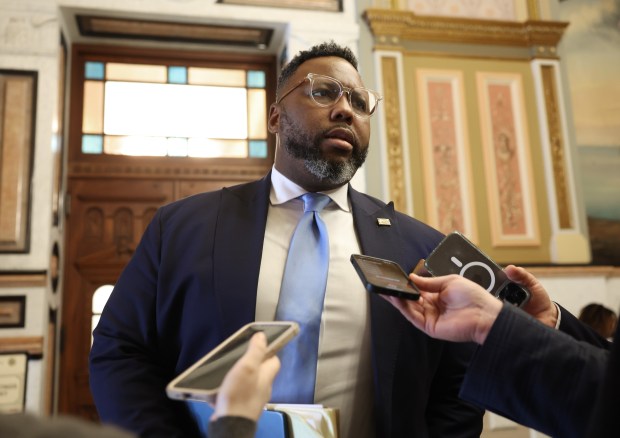Peeking from the soil in my yard on March 26 were green leaves about an inch tall that I hadn’t seen yesterday. They were the leaves of bloodroot, which produces white, multi-petaled flowers close to the ground.
In central Illinois, bloodroots are already in full bloom. That’s typically how it goes each spring here in northern Illinois as the parade of wildflower blossoms begins a good week to two weeks after what’s happening farther south.
It’s the science of phenology – the timing of biological events in a plant or animal’s life such as flowering, migration, and reproduction. Plant phenology shows that farther south where it’s warmer, the bloodroots are already in bloom, but here in northern Illinois, they’re just beginning. Plant phenology also can be used to study flower blooms in the same place year after year to see if the timing is changing in their life cycle.
The earliest I have documented bloodroot in full bloom in my yard was April 7. That was in 2020. I wonder if the blooms will open even earlier this year, and even earlier than that a few decades from now.
Through Project BudBurst, created at the Chicago Botanic Garden in 2007, researchers, educators, gardeners and community scientists are adding phenology information to a large database to determine how humans impact the natural world. They’re examining whether some wildflower species are blooming earlier. The more years of data they have the more they can determine how seasonal patterns change in the midst of global warming. You can contribute your data by visiting budburst.org
A voice from the past lends credence to what may happen to wildflower bloom times if the climate continues to warm.
It’s Henry David Thoreau. The naturalist writer known for his book, “Walden Pond” still read in classrooms today, documented the times at which wildflowers were blooming in his neck of the woods in Massachusetts.
“We have learned that wildflowers are now flowering earlier than in Thoreau’s day because of warming temperatures,” writes Richard B. Primack, author of “Walden Warming: Climate Change Comes to Thoreau’s Woods.”
One example is the pink lady’s slipper orchid, which Primack writes was observed blooming in late May by Thoreau, but now blooms in the same location in mid-May or earlier.
“Trees and shrubs are leafing out earlier too,” Primack writes.
While you might rejoice that the bloodroot will bloom earlier and the trees will turn green earlier in spring in northern Illinois, there’s something more complex to consider and it’s not something to be happy about. The phenology of plants and animals doesn’t change unilaterally across all species as the climate warms.
For example, bird migrations are not as closely tied to local temperatures. “As a result, birds that are not advancing their migrations may become mismatched with their habitats and sources of food,” Primack writes.
An example of what could be happening here in northern Illinois is that caterpillar eggs are hatching earlier on oak trees, which are also leafing out earlier. Migratory songbirds rely on the caterpillars for food. What if the birds arrive too late to get their meals?
Primack also explains that wildflowers depend on spring sunlight for energy before the tree canopy forms and shades them. If trees shade them earlier, they will lose that sunlight. He offers this example: “Jack-in-the-pulpit (a common spring wildflower in Illinois) has lost up to 26 percent of energy from sunlight compared to Thoreau’s time.” He postures that this plant species may lose as much as 48 percent of its sunlight-derived energy by the end of the 21st century.
I recently learned that bloodroot obtains its nutrients and water from beneath the soil from what’s known as mycorrhizal fungi (underground mushroom roots). The bloodroot in turn provides the fungi with sugars it needs to flourish.
What might happen to that underground network if the bloodroot blooms earlier?
As the climate changes, interactions among plants and animals as well as the ability for humans to get what they need from the earth also will change.
As I wait for the bloodroot to bloom in my yard, I contemplate human impact on Earth. There are no easy solutions and it’s complicated, but we are smart enough to work together to understand and help our changing natural world thrive.
Sheryl DeVore has worked as a full-time and freelance reporter, editor and photographer for the Chicago Tribune and its subsidiaries. She’s the author of several books on nature and the environment. Send story ideas and thoughts to sheryldevorewriter@gmail.com.



